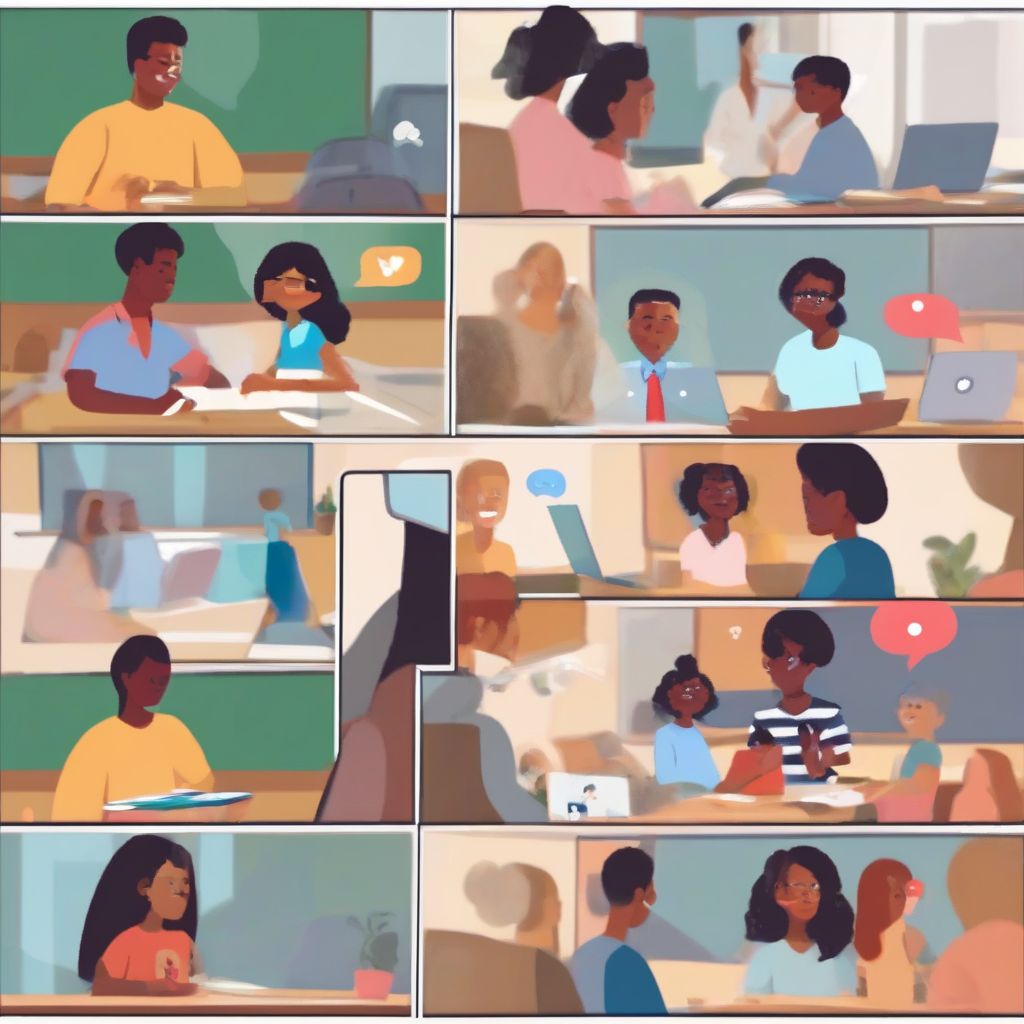Remember that dream where your child blossomed into a confident learner, their face lit up with a thirst for knowledge? It’s a shared aspiration between parents and teachers, a vision of a world where education ignites a fire in young minds. But just like a garden, nurturing a child’s educational growth requires collaboration. Parents and teachers, working in unison, can create a fertile ground where learning thrives. So, what are the best tools to bridge the gap between home and school?
Unlocking Communication: The Foundation of Collaboration
Open and consistent communication is the cornerstone of successful parent-teacher partnerships. Thankfully, in our digital age, a plethora of tools can help us build those bridges.
1. Digital Communication Platforms: Bridging the Distance
Gone are the days of relying solely on paper notes crumpled at the bottom of backpacks. Today, we have:
- Class Websites/Learning Management Systems (LMS): Platforms like Google Classroom, Canvas, and Moodle provide a centralized hub for assignments, announcements, and even virtual classrooms.
- Communication Apps: Tools like ClassDojo, Remind, and Seesaw facilitate two-way communication, allowing for instant messaging, sharing photos and videos of classroom activities, and even scheduling parent-teacher conferences with just a few taps on a screen.
Expert Insight:
“When parents and teachers communicate effectively, it’s like giving a child a pair of wings. They soar to new heights academically and personally.” – Dr. Susan Jones, Educational Psychologist
2. Digital Portfolios: Showcasing Growth and Understanding
Imagine a digital scrapbook where your child’s learning journey unfolds before your eyes. Digital portfolios, using tools like Google Drive, Evernote, or Seesaw, allow students to curate their work, showcasing their progress, creativity, and areas for growth. Parents and teachers can provide feedback in real-time, nurturing a love for learning and self-reflection.
Real-World Example:
A fourth-grade teacher uses Flipgrid to have students record themselves explaining science concepts. Parents can then watch the videos and engage their children in meaningful conversations about what they’re learning.
 Parent-teacher communication
Parent-teacher communication
Beyond Communication: Collaborative Tools for Deeper Engagement
Effective communication lays the groundwork, but let’s explore tools that deepen the parent-teacher partnership:
3. Shared Online Calendars and Planners: Staying in Sync
Juggling work, family life, and school events can feel like a circus act. Shared online calendars (Google Calendar, Outlook Calendar) and digital planners can help parents and teachers stay organized and informed:
- Important Dates: Never miss a beat! Keep track of school events, deadlines, parent-teacher conferences, and even student progress report dates.
- Assignment Management: Students, with the support of parents and teachers, can use digital planners to break down large assignments into manageable chunks, fostering time-management skills.
4. Virtual Parent-Teacher Conferences: Breaking Down Barriers
While in-person meetings are valuable, virtual platforms like Zoom, Google Meet, or Skype offer flexibility and convenience, especially for working parents or those with busy schedules. Virtual conferences allow:
- Face-to-face interaction: Maintain a personal connection even from a distance.
- Recorded sessions: Revisit the conversation if needed, ensuring clarity and shared understanding.
- Sharing screens: Review student work, data, or resources together for a more collaborative approach.
5. Collaborative Project-Based Learning Platforms: Learning Beyond the Classroom
Project-based learning (PBL) platforms like Edmodo, Kidblog, and Buncee ignite student engagement by connecting learning to real-world issues. These platforms allow:
- Parents as Partners: Parents can participate in projects, providing real-world insights, expertise, or even just encouragement.
- Authentic Learning Experiences: Children delve deeper into subjects when they can apply knowledge to solve problems, create products, or explore their passions.
Real-World Success:
A sixth-grade class uses Edmodo to collaborate on a project about climate change. Parents are invited to share their experiences with recycling, conservation, and their hopes for a greener future.
The Power of Partnership: Nurturing a Shared Vision
The best tools for parent-teacher collaboration aren’t just about technology; they are about fostering a shared vision for a child’s success. When parents and teachers work together, magic happens. Children feel supported, encouraged, and empowered to reach their full potential.
Actionable Tips for Building Strong Partnerships:
- Initiate Contact Early: Don’t wait for a problem to arise. Reach out at the beginning of the year to establish a positive rapport.
- Be Proactive: Share your observations and concerns about your child’s progress, and be open to suggestions from the teacher.
- Celebrate Successes: Acknowledge and celebrate achievements, both big and small.
Remember, a strong parent-teacher partnership is a journey, not a destination. By embracing these tools and fostering open communication, we can create a learning environment where every child can thrive.
[amazon bestseller=”parent teacher communication”]
